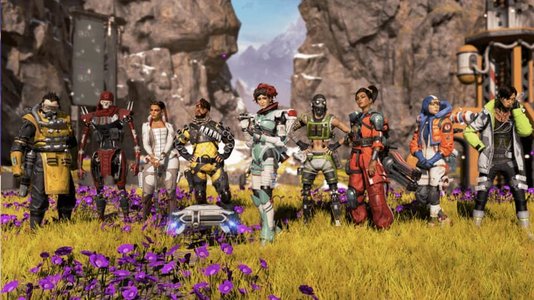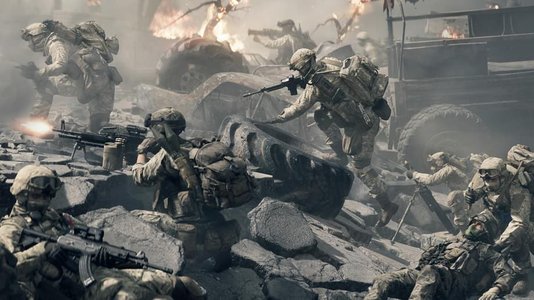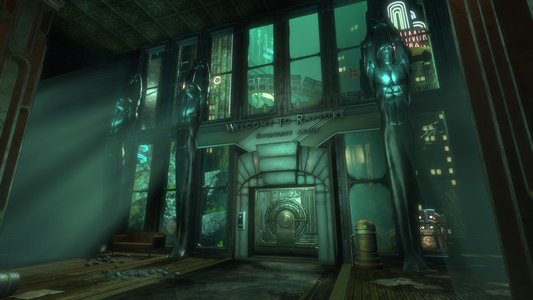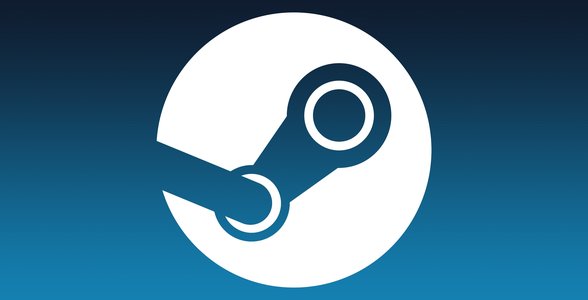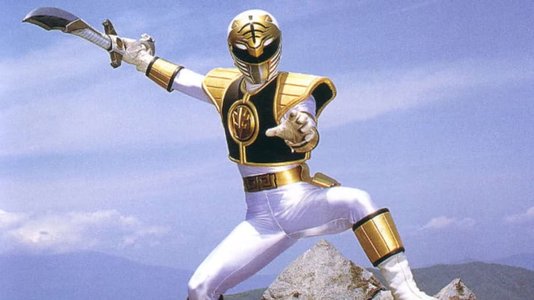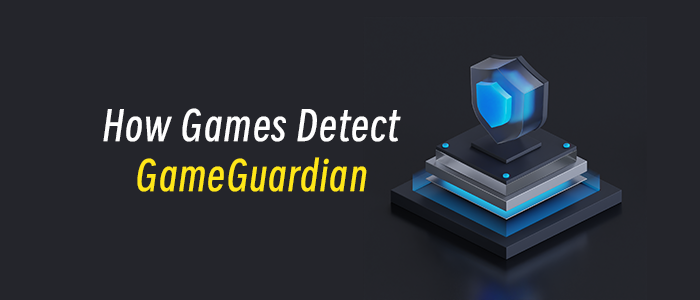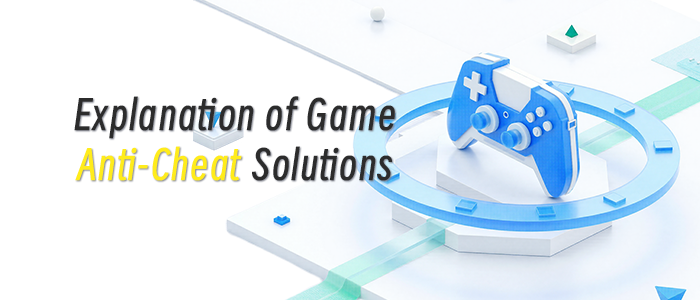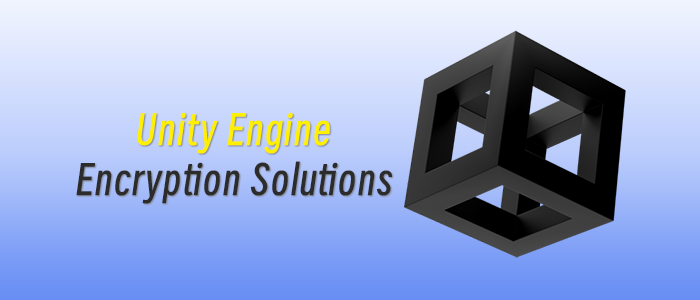[Reprinting the latest monthly column by John Harris on sister website GameSetWatch, we look at initial entries Harris has compiled from an in-progress Roguelike encyclopedia.] For a while now I've been working on a general encyclopedia of roguelikes, covering many games, general concepts, some specifics of the big games, and general items of interest. It's still very much a work in progress. What follows, presented for general interest, entertainment, and maybe just a little education, is some excerpts from this document. (Included entries may not match their final form.) AMULET (of Life Saving) This particularly useful amulet instantly revives the player character when he is killed. The item is destroyed in the process. In Nethack, this also remedies whatever condition it was that caused the death. If run out of hit points it completely heals; if starved to death it fills the stomach, it reverses stoning, and so on. (There at least two exceptions to this: self-genocide and brainlessness.) In the process, and in one of the many homages to classic Dungeons & Dragons the game offers, it drains one point of Constitution, although this is much less of a problem in Nethack since that statistic fluctuates with exercise. It still adds one to the player's “death count,” and in fact is the only way to do this without ending the game or being in either discovery or wizard mode. In ADOM, Amulets of Life Saving only protect against running out of hit points. AMULET (of Yendor) A special amulet in the games Rogue, Hack and Nethack. This object is the goal of the player's quest; getting it out of the dungeon either wins the game, or is an important step towards winning. In Rogue it starts appearing at level 26, and the player cannot take the upstairs without it. In many versions of Rogue the Amulet also either negates or greatly reduces hunger; if it doesn't in your version then you will have a very tough time of things, since food is not ordinarily generated on the trip up out of the dungeon. In Nethack, this item disables level teleport, and getting it out of the dungeon triggers the endgame, sending the player to the Elemental Planes. ANCIENT CAVE A special area in the Super Nintendo game Lufia II: Rise of the Sinistrals. After finding it in the main game, the player may play a special mode involving exploring the dungeon, which is randomly generated and offers random treasure. It has 100 levels. If this sounds familiar, well, it's quite obvious where Lufia's developers got the idea. Actually most of the Lufia games after the first one have this mode (and in The Legend Returns all the dungeons play that way), but the second game in the series probably has the best version. ARCHMAGE In ADOM, this is a community term for a character able to cast the absurdly powerful Wish spell indefinitely. Wish has a whole raft of factors that make it incredibly difficult to use. Learning it takes so long the player may actually come close to starving during the process. It requires thousands of power points to cast, doing so will eventually use up the book without special procedures, and each time it's cast it drops a random stat by 10 points. Despite all these factors, and a testament both to the depth of the game and the obsession players have for it, they have discovered ways to indefinitely cast Wish regardless of all these things. For more information, check the ADOM Wiki: http://ancardia.wikia.com/wiki/Archmage  ARTIFACT Also called a unique item. These are items limited in existence. You only ever find one in a given play of a game (with the exception of ADOM's si, a special case). Except (sort of) for Rogue, all of the major roguelikes have artifacts in some form. ADOM has lots of artifacts, many with pre-defined locations in the game. Partly because there are so many hard-coded artifacts to be found, ADOM feels a bit less random than other roguelikes. Additionally, its items tend not to be references or injokes, but items created for their fantasy flavor, which tends to rob the game of a bit of the classic roguelike feel. (Of course, some people like this fact about the game.) Angband's artifacts mostly come from the literature of J.R.R. Tolkien, giving it a wide array of items for the player to find. Some of Angband's artifacts so severely outclass normal weapons that finding one is almost a requirement, a fairly common situation among the major roguelikes. Dungeon Crawl provides for both hard-coded artifacts and randarts. Like ADOM, Crawl's artifacts mostly spring from a mythology created for the game. Randarts deserve special mention: these items have many powers, like artifacts, but are generated randomly. To discover their powers you must identify them like any other item. Crawl's artifacts cannot be enchanted; their plusses (or minuses) are fixed upon creation. Nethack takes most of its artifacts from a surprisingly wide range of literature. In the dungeons you can find Excalibur, Orcrist, Sting, Stormbringer, Grayswandir, Mjollnir, Vorpal Blade and many others. A few are strange inclusions indeed, such as Snikersnee from Gilbert and Sullivan's The Mikado. There is also a type of artifact called quest artifacts, which are even more powerful and mostly specific to each character role. Those tend to be even more detailed references; you can find items ranging from Robert Howard's Heart of Ahriman, to no less than Edward Spenser's Magic Mirror of Merlin. In many of the other major roguelike games, some of the artifacts are obviously bad, sometimes very bad, with large minuses, corrupting influences or even permanent curses. In contrast, no artifact in Nethack is worse than useless (which, unfortunately, many of its artifacts kind of are). In Rogue, the only item that might be termed an artifact in Rogue is the Amulet of Yendor, the goal of the quest. Some variants, however, had a variety of goal items to look for, each with special powers. These items are closer to what today's roguelike players would consider to be artifacts. AUTO-SCUM An option for play in Angband. There are what might be considered to be unusual levels, with powerful monsters or items on it, and boring levels, so-so places without much of interest, in that game. Its dungeon levels are large enough that substantial time can be spend on a boring level before it's fully explored, and its boringness becomes apparent. A message called a level feeling is (usually) displayed upon entering a level to tip the player off on how interesting a place it will be to explore. Some players will regenerate levels, by reentering them until they get good level feelings. With the auto-scum option turned on, the game will help to alleviate the need for this, by regenerating a level invisibly until it reaches some minimal interest criteria. In this way, Angband actually works to aid a gameplay abuse, figuring that the monotony of going through the motions is a greater harm to game enjoyment than that of finding better treasure. BORG A program that automatically plays a game for you. The name comes from the "Angband Borg," written by Ben Harrison, but the idea dates back to a program called Rog-O-Matic that could play Rogue, and play it well. Some borgs are written as separate programs that interface with the game software in much the same way a human would, interpreting the contents of the terminal window and sending keystrokes to it. But others, including the Angband Borg, are written as part of the game itself for convenience and ease of implementation. It is important, in these cases, to not have the borg cheat by giving it access to data that a player would not have in the same circumstance. CHARISMA One of the six attributes from Dungeons & Dragons. In roguelikes charisma is usually the odd stat out, the one with the least affect on gameplay. In Nethack, the source code reveals that charisma only influences the game in a handful of instances. Particularly, it affects the chance of getting a good result in a succubus or incubus encounter (but Intelligence matters just as much), and it affects the prices you are charged in shops. ADOM also has Charisma, and it has a similarly negligible effect on gameplay. In classic Dungeons & Dragons, Charisma affected some encounter reactions with monsters and the number of followers a character could have. 3rd edition made Charisma into an analogue for Intelligence for the sorcerer character class. CHEATING The relationship between video games, which are mostly just hyper-advanced forms of solitaire, and cheating is weirdly complicated and controversial. Some say that, in a game you play for your own amusement, anything goes, and there is some truth to that. Others say that to cheat at a game with no opponents misses the point, and there's truth in this too. Roguelike aficionados tend to consider that there is an expected style of play, and that it matters greatly to the way the game is designed to be played, perhaps more so than in most other games. One fact cannot be denied: if you claim to have won a roguelike game, which generally are of the "Mr. Everest" school of game design where you are given a difficult challenge to overcome, but have cheated, you will probably attract all kinds of tsk-tsks among people who really know the game. CONFLICT One of the most useful attributes, or intrinsics, you can have in Nethack. It comes from the wearing of a Ring of Conflict, possibly the eating of a Ring of Conflict, or from invoking the Sceptre of Might. While you cause conflict, monsters in sight will tend to attack each other if adjacent. If adjacent to both you and another monster, they randomly decide who to attack. This applies equally to hostile, peaceful and even friendly monsters such as pets, so it has drawbacks. Utilized intelligently, it is still one of the most profoundly useful abilities in the game. Even if that master lich is able to resist hitting that cockatrice, there is still a chance that the cockatrice will choose to hit it. This is useful for two reasons. The obvious one is that monsters die without you having to suffer through as much danger. Every monster that's killed by the claws of another is one less you have to beat to death yourself. The less obvious, but more profound, reason is that it dilutes enemy attention. If you are surrounded by eight monsters without conflict, that's eight hits you receive per round. If you have conflict, then some of those hits will be directed towards each other, meaning you take far less damage per round. Some of the time they will still choose to attack you, so it's not a get-out-of-jail free card. It just reduces the general danger level of the dungeon. Monsters with high combined level and magic resistance can resist conflict, and it never works on the Wizard of Yendor. What's more, if you have conflict when you enter the Astral Plane, you won't receive your guardian angel; instead, the game will send in some hostile angels surrounding you. If you put the ring on after entering the level you won't get the enemy angels, but your guardian will turn hostile. DEATHONASTICK A Nethack player on alt.org. I can't tell his woeful tale better than the NethackWiki (http://nethackwiki.com/wiki/DeathOnAStick): "He/she is famous in the Nethack community for his year-and-a-half-long game on nethack.alt.org, from 2004-04-17 to 2005-11-27. They spent much of this time polypiling rocks into gems and collecting pet giants to carry the bags of gems for them, since there were so many. After killing the Wizard of Yendor on dungeon level 1, they found a potion of gain level from the death drop. They drank it without fully identifying it first, finding out it was cursed. (In Nethack, cursed potions of gain level cause you to go up one dungeon level. The message is "You rise up, through the ceiling!" This is the one form of player-initiated level teleportation that works even while carrying the Amulet.) Upon reaching the Plane of Earth, they desperately checked their inventory, and indeed they were carrying no gems. At this point, they went idle for 38 seconds. A few of their entourage of giants had been close enough to be dragged into the Planes with them, but they were either killed off or left behind at the inter-plane portals. The only gems DeathOnAStick had at their ascension were 2 dilithium crystals. He/she later tried again, ascending after 405 hours on August 16, 2010, bringing over 8,000 gems."
ARTIFACT Also called a unique item. These are items limited in existence. You only ever find one in a given play of a game (with the exception of ADOM's si, a special case). Except (sort of) for Rogue, all of the major roguelikes have artifacts in some form. ADOM has lots of artifacts, many with pre-defined locations in the game. Partly because there are so many hard-coded artifacts to be found, ADOM feels a bit less random than other roguelikes. Additionally, its items tend not to be references or injokes, but items created for their fantasy flavor, which tends to rob the game of a bit of the classic roguelike feel. (Of course, some people like this fact about the game.) Angband's artifacts mostly come from the literature of J.R.R. Tolkien, giving it a wide array of items for the player to find. Some of Angband's artifacts so severely outclass normal weapons that finding one is almost a requirement, a fairly common situation among the major roguelikes. Dungeon Crawl provides for both hard-coded artifacts and randarts. Like ADOM, Crawl's artifacts mostly spring from a mythology created for the game. Randarts deserve special mention: these items have many powers, like artifacts, but are generated randomly. To discover their powers you must identify them like any other item. Crawl's artifacts cannot be enchanted; their plusses (or minuses) are fixed upon creation. Nethack takes most of its artifacts from a surprisingly wide range of literature. In the dungeons you can find Excalibur, Orcrist, Sting, Stormbringer, Grayswandir, Mjollnir, Vorpal Blade and many others. A few are strange inclusions indeed, such as Snikersnee from Gilbert and Sullivan's The Mikado. There is also a type of artifact called quest artifacts, which are even more powerful and mostly specific to each character role. Those tend to be even more detailed references; you can find items ranging from Robert Howard's Heart of Ahriman, to no less than Edward Spenser's Magic Mirror of Merlin. In many of the other major roguelike games, some of the artifacts are obviously bad, sometimes very bad, with large minuses, corrupting influences or even permanent curses. In contrast, no artifact in Nethack is worse than useless (which, unfortunately, many of its artifacts kind of are). In Rogue, the only item that might be termed an artifact in Rogue is the Amulet of Yendor, the goal of the quest. Some variants, however, had a variety of goal items to look for, each with special powers. These items are closer to what today's roguelike players would consider to be artifacts. AUTO-SCUM An option for play in Angband. There are what might be considered to be unusual levels, with powerful monsters or items on it, and boring levels, so-so places without much of interest, in that game. Its dungeon levels are large enough that substantial time can be spend on a boring level before it's fully explored, and its boringness becomes apparent. A message called a level feeling is (usually) displayed upon entering a level to tip the player off on how interesting a place it will be to explore. Some players will regenerate levels, by reentering them until they get good level feelings. With the auto-scum option turned on, the game will help to alleviate the need for this, by regenerating a level invisibly until it reaches some minimal interest criteria. In this way, Angband actually works to aid a gameplay abuse, figuring that the monotony of going through the motions is a greater harm to game enjoyment than that of finding better treasure. BORG A program that automatically plays a game for you. The name comes from the "Angband Borg," written by Ben Harrison, but the idea dates back to a program called Rog-O-Matic that could play Rogue, and play it well. Some borgs are written as separate programs that interface with the game software in much the same way a human would, interpreting the contents of the terminal window and sending keystrokes to it. But others, including the Angband Borg, are written as part of the game itself for convenience and ease of implementation. It is important, in these cases, to not have the borg cheat by giving it access to data that a player would not have in the same circumstance. CHARISMA One of the six attributes from Dungeons & Dragons. In roguelikes charisma is usually the odd stat out, the one with the least affect on gameplay. In Nethack, the source code reveals that charisma only influences the game in a handful of instances. Particularly, it affects the chance of getting a good result in a succubus or incubus encounter (but Intelligence matters just as much), and it affects the prices you are charged in shops. ADOM also has Charisma, and it has a similarly negligible effect on gameplay. In classic Dungeons & Dragons, Charisma affected some encounter reactions with monsters and the number of followers a character could have. 3rd edition made Charisma into an analogue for Intelligence for the sorcerer character class. CHEATING The relationship between video games, which are mostly just hyper-advanced forms of solitaire, and cheating is weirdly complicated and controversial. Some say that, in a game you play for your own amusement, anything goes, and there is some truth to that. Others say that to cheat at a game with no opponents misses the point, and there's truth in this too. Roguelike aficionados tend to consider that there is an expected style of play, and that it matters greatly to the way the game is designed to be played, perhaps more so than in most other games. One fact cannot be denied: if you claim to have won a roguelike game, which generally are of the "Mr. Everest" school of game design where you are given a difficult challenge to overcome, but have cheated, you will probably attract all kinds of tsk-tsks among people who really know the game. CONFLICT One of the most useful attributes, or intrinsics, you can have in Nethack. It comes from the wearing of a Ring of Conflict, possibly the eating of a Ring of Conflict, or from invoking the Sceptre of Might. While you cause conflict, monsters in sight will tend to attack each other if adjacent. If adjacent to both you and another monster, they randomly decide who to attack. This applies equally to hostile, peaceful and even friendly monsters such as pets, so it has drawbacks. Utilized intelligently, it is still one of the most profoundly useful abilities in the game. Even if that master lich is able to resist hitting that cockatrice, there is still a chance that the cockatrice will choose to hit it. This is useful for two reasons. The obvious one is that monsters die without you having to suffer through as much danger. Every monster that's killed by the claws of another is one less you have to beat to death yourself. The less obvious, but more profound, reason is that it dilutes enemy attention. If you are surrounded by eight monsters without conflict, that's eight hits you receive per round. If you have conflict, then some of those hits will be directed towards each other, meaning you take far less damage per round. Some of the time they will still choose to attack you, so it's not a get-out-of-jail free card. It just reduces the general danger level of the dungeon. Monsters with high combined level and magic resistance can resist conflict, and it never works on the Wizard of Yendor. What's more, if you have conflict when you enter the Astral Plane, you won't receive your guardian angel; instead, the game will send in some hostile angels surrounding you. If you put the ring on after entering the level you won't get the enemy angels, but your guardian will turn hostile. DEATHONASTICK A Nethack player on alt.org. I can't tell his woeful tale better than the NethackWiki (http://nethackwiki.com/wiki/DeathOnAStick): "He/she is famous in the Nethack community for his year-and-a-half-long game on nethack.alt.org, from 2004-04-17 to 2005-11-27. They spent much of this time polypiling rocks into gems and collecting pet giants to carry the bags of gems for them, since there were so many. After killing the Wizard of Yendor on dungeon level 1, they found a potion of gain level from the death drop. They drank it without fully identifying it first, finding out it was cursed. (In Nethack, cursed potions of gain level cause you to go up one dungeon level. The message is "You rise up, through the ceiling!" This is the one form of player-initiated level teleportation that works even while carrying the Amulet.) Upon reaching the Plane of Earth, they desperately checked their inventory, and indeed they were carrying no gems. At this point, they went idle for 38 seconds. A few of their entourage of giants had been close enough to be dragged into the Planes with them, but they were either killed off or left behind at the inter-plane portals. The only gems DeathOnAStick had at their ascension were 2 dilithium crystals. He/she later tried again, ascending after 405 hours on August 16, 2010, bringing over 8,000 gems."  DEMOGORGON This demon prince, is the legendary hardest monster in Nethack, with a difficulty score of 57. By way of contrast, the Wizard of Yendor and all the endgame Riders have scores of 34. Some of the other demon lords and prices have closer scores, but are still wimps compared to the mighty D.G. Perhaps surprisingly, Nethack doesn't have many truly fearsome monsters. So many of its foes are vulnerable to instakills such as cockatrice wielding, or protective measures like engraving Elbereth. Most of them are dangerous due to surprise: sudden Medusa stoning, or touch-of-death without magic resistance. Demogorgon, however, deserves its reputation. Not only is he fast, but he can inflict disease with a successful hit. Disease will kill the player character if it progresses too long, and is one of the few states in Nethack that there is no easy defense against; disease resistance can only be acquired through polymorph, and most alternate forms are weaker than player races. It is possible, if the player is unlucky, to be diseased twice in a round, which greatly reduces the time left to live. The best cures for disease are drinking uncursed or better potions of extra or full healing (or blessed ordinary healing), or drinking holy water. In the absence of these applying an uncursed unicorn horn can cure it, but has to drawback of being random in its operation. If it doesn't work on the first application, the player may not live long enough to get a second. Fortunately, Demogorgon doesn't appear in the great majority of games. Unlike other demon lords, it has no special level or lair. It can only be summoned by high-level spellcasters or other demons. If you do encounter it, it is recommended that you not skimp out on resources in the disposing of the enemy. A cockatrice corpse is the easiest way to kill it, but will probably not be at hand. Elbereth is effective against it. DIABLO Blizzard's megahit dungeon crawling game series is heavily inspired by roguelikes. That is fact: UMoria is mentioned in the credits. And yet, the branch they chose to borrow from is possibly the least interesting from a general gameplay standpoint. UMoria is a descendent of Moria and the ancestor of Angband. The Moria family has always been primarily combat games. They have random item definitions, but relative to the amount of terrain that must be covered they play a very small role in the game. Some of the unknown items in Angband are extremely dangerous to happen upon randomly, so experienced players identify everything before using them. Diablo pays lip-service to item identification, but items are completely unusable until ID'd, so the practical effect is, in essence, to delay item acquisition until the player gets back to town. The Diablo games are not bad games generally, but they do show an unfortunate tendency to ignore those aspects of roguelikes that are truly innovative: the idea that you're fighting the dungeon more than the monsters in it, the sense of wonder, the logic game of figuring out the world anew each play, and the strong resource management game. The resource management portion is especially missed, especially the time management, which ultimately adds up to one word, one horrible word that sums up the greatest problem with CRPGs of nearly all kinds, all kinds except for roguelikes, that word that describes the action of playing, without real risk, over and over, totaling arbitrary numbers with other arbitrary numbers on an adding machine that might have glowy runic glyphs on it, but is no less a machine for it. That word is grind. DISCWORLD A popular series of satirical fantasy novels written by Terry Pratchett. Nethack contains a number of references to it. The books have been compared to something like a fantasy version of The Hitchhiker's Guide to the Galaxy, which is not entirely un-apt but is ultimately reductionist. The two things are only similar in the sense of being humorous, and of having a similar narrative tone; the actual stories are pretty different. Discworld progresses to telling some actually very good stories in their own right. However most of Nethack's references to the books are from the early stories; its most infamous character role, the tourist, existed before Discworld, but was neatly retconned into being a Discworld reference with Nethack 3.1, complete with a city of Ankh-Morpork to visit. ENCHANTMENT In the broad sense, this is any non-instantaneous magical effect, like the "of light" on a scroll or the "of regeneration" on a ring. But practically, in most roguelikes, this refers to the plus on a piece of equipment. This is usually denoted by a prefix or suffix attached to the weapon's name, as in, "longsword +2" or "+1 mace." A borrowing of a Dungeons & Dragons convention, the value of the plus signifies the power of the enchantment. These enchantments are bonuses; they cause the item to perform its purpose more effectively. An enchanted weapon typically does more damage and hits more often, and enchanted armor grants a higher armor class bonus than normal. Some other items, most frequently certain rings, may also have plusses. Generally, unenchanted items are understood to be "+0," but that doesn't mean an item without a plus in its name is unenchanted; in many games the plus is a secret property of an item, that must be identified before it is revealed. Through the use of some items, especially scrolls of enchant
DEMOGORGON This demon prince, is the legendary hardest monster in Nethack, with a difficulty score of 57. By way of contrast, the Wizard of Yendor and all the endgame Riders have scores of 34. Some of the other demon lords and prices have closer scores, but are still wimps compared to the mighty D.G. Perhaps surprisingly, Nethack doesn't have many truly fearsome monsters. So many of its foes are vulnerable to instakills such as cockatrice wielding, or protective measures like engraving Elbereth. Most of them are dangerous due to surprise: sudden Medusa stoning, or touch-of-death without magic resistance. Demogorgon, however, deserves its reputation. Not only is he fast, but he can inflict disease with a successful hit. Disease will kill the player character if it progresses too long, and is one of the few states in Nethack that there is no easy defense against; disease resistance can only be acquired through polymorph, and most alternate forms are weaker than player races. It is possible, if the player is unlucky, to be diseased twice in a round, which greatly reduces the time left to live. The best cures for disease are drinking uncursed or better potions of extra or full healing (or blessed ordinary healing), or drinking holy water. In the absence of these applying an uncursed unicorn horn can cure it, but has to drawback of being random in its operation. If it doesn't work on the first application, the player may not live long enough to get a second. Fortunately, Demogorgon doesn't appear in the great majority of games. Unlike other demon lords, it has no special level or lair. It can only be summoned by high-level spellcasters or other demons. If you do encounter it, it is recommended that you not skimp out on resources in the disposing of the enemy. A cockatrice corpse is the easiest way to kill it, but will probably not be at hand. Elbereth is effective against it. DIABLO Blizzard's megahit dungeon crawling game series is heavily inspired by roguelikes. That is fact: UMoria is mentioned in the credits. And yet, the branch they chose to borrow from is possibly the least interesting from a general gameplay standpoint. UMoria is a descendent of Moria and the ancestor of Angband. The Moria family has always been primarily combat games. They have random item definitions, but relative to the amount of terrain that must be covered they play a very small role in the game. Some of the unknown items in Angband are extremely dangerous to happen upon randomly, so experienced players identify everything before using them. Diablo pays lip-service to item identification, but items are completely unusable until ID'd, so the practical effect is, in essence, to delay item acquisition until the player gets back to town. The Diablo games are not bad games generally, but they do show an unfortunate tendency to ignore those aspects of roguelikes that are truly innovative: the idea that you're fighting the dungeon more than the monsters in it, the sense of wonder, the logic game of figuring out the world anew each play, and the strong resource management game. The resource management portion is especially missed, especially the time management, which ultimately adds up to one word, one horrible word that sums up the greatest problem with CRPGs of nearly all kinds, all kinds except for roguelikes, that word that describes the action of playing, without real risk, over and over, totaling arbitrary numbers with other arbitrary numbers on an adding machine that might have glowy runic glyphs on it, but is no less a machine for it. That word is grind. DISCWORLD A popular series of satirical fantasy novels written by Terry Pratchett. Nethack contains a number of references to it. The books have been compared to something like a fantasy version of The Hitchhiker's Guide to the Galaxy, which is not entirely un-apt but is ultimately reductionist. The two things are only similar in the sense of being humorous, and of having a similar narrative tone; the actual stories are pretty different. Discworld progresses to telling some actually very good stories in their own right. However most of Nethack's references to the books are from the early stories; its most infamous character role, the tourist, existed before Discworld, but was neatly retconned into being a Discworld reference with Nethack 3.1, complete with a city of Ankh-Morpork to visit. ENCHANTMENT In the broad sense, this is any non-instantaneous magical effect, like the "of light" on a scroll or the "of regeneration" on a ring. But practically, in most roguelikes, this refers to the plus on a piece of equipment. This is usually denoted by a prefix or suffix attached to the weapon's name, as in, "longsword +2" or "+1 mace." A borrowing of a Dungeons & Dragons convention, the value of the plus signifies the power of the enchantment. These enchantments are bonuses; they cause the item to perform its purpose more effectively. An enchanted weapon typically does more damage and hits more often, and enchanted armor grants a higher armor class bonus than normal. Some other items, most frequently certain rings, may also have plusses. Generally, unenchanted items are understood to be "+0," but that doesn't mean an item without a plus in its name is unenchanted; in many games the plus is a secret property of an item, that must be identified before it is revealed. Through the use of some items, especially scrolls of enchant
No tags.





